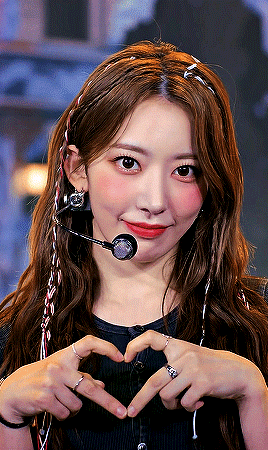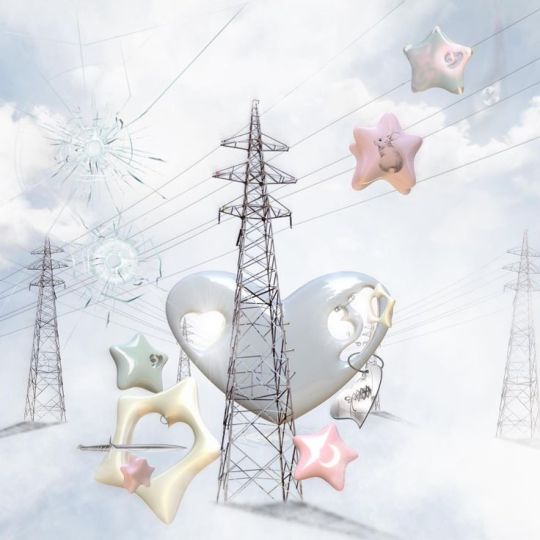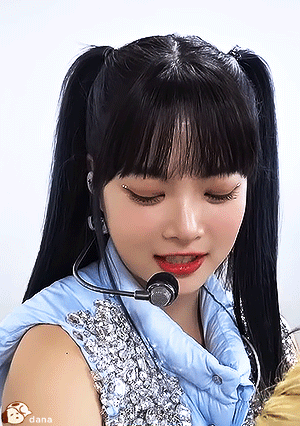#antifragility
Text
By: Julian Adorney, Mark Johnson and Geoff Laughton
Published: Mar 23, 2024
In The Divine Conspiracy, Dallas Willard tells the story of a jet fighter pilot who was practicing high-speed maneuvers. As Willard puts it, “She turned the controls for what she thought was a steep ascent—and flew straight into the ground. She was unaware that she had been flying upside down.”
What if we were flying upside down? But let’s go further. What if an entire generation was flying upside down–flying through fog and danger, unable to see either ground or sky, and the well-intended adjustments pushed on them by “experts” were just bringing them closer to catastrophe?
That’s the lens through which we interpret Abigail Shrier’s New York Times bestseller Bad Therapy.
There’s no denying that the youngest generation is in crisis. As the Addiction Center notes, members of Generation Z “run a higher risk of developing a substance abuse problem than previous age groups.” A 2015 report found that 23.6 percent of 12th graders use illicit drugs. The American Psychological Association reports that just 45 percent of Gen Zers report that their mental health is “very good” or “excellent,” compared with 51 percent of Gen Xers and 70 percent of Boomers. A concerning 42 percent of Gen Zers have been diagnosed with a mental health condition, and an astounding 60 percent take medication to manage their mental health.
It gets worse. The rate of self-harm for girls age 10-14 increased over 300 percent from 2001 to 2019 (before the pandemic). According to a 2021 CDC survey, 1 in 3 teenage girls have seriously considered killing themselves.
Well-meaning therapists, teachers, and school counselors are trying to help the next generation to rise up. But what if everyone involved is upside down? What if, like the fighter pilot that Willard describes, what they think is rising up is actually bringing them into deeper danger? Shrier makes a strong case that that’s exactly what’s happening.
Lots of educators encourage kids to spend more time checking in with their feelings. In the 2021-2022 school year, 76 percent of principals said that their school had adopted a Social and Emotional Learning (SEL) curriculum. Common SEL practices include: asking students how they’re feeling at the start of each day, teaching that students should be more aware of how they’re feeling in any given moment, and encouraging students to use activities like writing and art to express their feelings.
The problem is that all of this obsession with feelings can actually make students feel worse. As Yulia Chentsova Dutton, head of the the Culture and Emotions Lab at Georgetown University, says, “Emotions are highly reactive to our attention to them.” “Certain kinds of attention to emotions, focus on emotions,” she explains, “can increase emotional distress. And I’m worried that when we try to help our young adults, help our children, what we do is throw oil into the fire.” Or to put it another way: when we ask kids over and over again how they’re feeling, we’re subtly and accidentally encouraging them to feel bad.
The reason is that, as psychiatry professor Michael Linden explains, most of us don’t feel happy all the time. Dealing with life involves ignoring a certain amount of moment-by-moment discomfort: I’m tired, my feet hurt, I’m sore from sitting down all day, I’m a little worried about my mom. When we encourage kids to check in many times per day on how they’re feeling, we’re tacitly encouraging them to bring to the surface–and then dwell on–all the things going on in their minds that are not “happiness.” That’s why, as Linden puts it, “Asking somebody ‘how are you feeling?’ is inducing negative feelings. You shouldn’t do that.”
But it gets worse.
Obsessing over our emotions can actually prevent us from doing the things that might make us feel better. Anyone who’s spent too long wallowing after a bad break-up knows this; at a certain point, you have to shelve your unpleasant emotions so that you can get on with your life. Psychologists describe two mental states that we can occupy at any given time: “action orientation” and “state orientation.” “State orientation” is where you focus primarily on yourself (e.g., how you feel about doing the task at hand, whether your wrist hurts or you’re starting to get sick, etc.). “Action orientation” is where you primarily focus on the task at hand. As a study published by Cambridge University Press notes, only the latter is actually conducive to pursuing and accomplishing goals. “State orientation is a personality that has difficulty in taking action toward goal fulfillment,” the authors warn. By encouraging young people to focus so much on their feelings, we might be hurting their ability to adopt the mindset necessary to accomplish goals in life. If so, that would make them even more unhappy.
But the dangers posed by well-meaning “experts” telling students to fly in the wrong direction–towards the ground instead of towards the sky–go well beyond encouraging unhappiness and depression. Rates of suicide and self-harm for young people are skyrocketing. But in their attempts to cope with the spike, well-meaning administrators might be making the problem worse. Here are questions from the 2021 Florida High School Youth Risk Behavior Survey, administered to students age 14 and up:
During the past 12 months, did you ever feel so sad or hopeless almost every day for two weeks or more in a row that you stopped doing your usual activities?
During the past 12 months, did you ever seriously consider attempting suicide?
During the past 12 months, did you make a plan about how you would attempt suicide?
During the past 12 months, how many times did you actually attempt suicide?
If you attempted suicide during the past 12 months, did any attempt result in an injury, poisoning, or overdose that had to be treated by a doctor or nurse?
A survey authored by the CDC asked students “During the past year, did you do something to purposely hurt yourself without wanting to die, such as cutting or burning yourself on purpose?” Another survey offered this question to Delaware middle schoolers: “Sometimes people feel so depressed about the future that they may consider attempting suicide or killing themselves. Have you ever seriously thought about killing yourself?”
Administrators may be asking these questions with the best of intentions, but the end result is to normalize suicide in young peoples’ minds. If you were 12 years old and taking a survey like this along with all of your classmates, you might reasonably conclude that suicide, or at least suicidal ideation and/or self harm, were pretty common at your school. Otherwise, why would everyone your age have to take such an exhaustive assessment about it?
One reason this is so dangerous is that, as Shrier writes, “The virality of suicide and self-harm among adolescents is extremely well-established.” Following the release of Netflix’s TV show 13 Reasons Why, which some said valorized a fictional girl who killed herself, several studies found a spike in teen suicide rates. The CDC agrees. In a post warning about the dangers of “suicide contagion,” the CDC said that journalists should avoid things like:
“Engaging in repetitive, ongoing, or excessive reporting of suicide in the news.”
“Reporting ‘how-to’ descriptions of suicide.”
“Presenting suicide as a tool for accomplishing certain ends” (i.e., as a “means of coping with personal problems”).
But this is most of what the surveys described above are doing. They are deluging students with repetitive and excessive discussion of suicide. They are describing different methods for killing yourself (e.g., cutting or burning yourself). One survey, which asks students who have considered killing themselves why they did so (possible answers include “demands of schoolwork,” “problems with peers or friends,” and “being bullied”) is a textbook example of presenting suicide as a “means of coping with personal problems.”
The authors of these surveys seem to at least recognize the risk that students are flying upside down, and that these surveys might take them closer to the ground. One survey concludes by telling students, “If any survey questions or your responses have caused you to feel uncomfortable or concerned and you would like to talk to someone about your feelings, talk to your school’s counselor, to a teacher, or to another adult you trust.” The survey also includes links to different hotlines.
Communicating to kids that suicide is normal and a possible solution to their problems might be the worst way that some schools are failing kids, but it’s also far from the only way.
Schools are increasingly lax about standards, willing to let almost anyone get away with almost anything. Some accommodations do make sense: for example, it makes sense to give a kid with dyslexia more time to complete the verbal component of the SAT. But Shrier argues that standards are falling for perfectly healthy students too. “School counselors—students’ in-school ‘advocates,’” Shrier writes, now “lobby teachers to excuse lateness or absence, forgive missed classwork, allow a student to take walks around the school in the middle of class, ratchet grades upward, reduce or eliminate homework requirements, offer oral exams in place of written ones, and provide preferential seating to students who lack even an official diagnosis.”
Shrier documents stories of students who have been allowed to turn in work late because they were having a “tough Mental Health Day” or because “I was having a rough day and dealing with my gender identity.”
The problem with this is that one of the primary things that children and teenagers do is try to figure out the boundaries of the world. When a child throws a tantrum, it’s not malicious–they’re trying to understand this new world and figure out what they can get away with. As Jordan Peterson writes in Twelve Rules for Life, young children are “like blind people, searching for a wall.” “They have to push forward, and test,” he writes, “to see where the actual boundaries lie.” What’s true of young children is also true of older children and even (to a lesser extent) adults. All of us are trying to figure out the rules of life–that is, what we can get away with. If well-meaning teachers and counselors tell students that one of the rules is that you don’t have to do your homework on time if you say that you’re having a rough day, then we shouldn’t be surprised when more young people seem to manifest rough days.
But this is the opposite of what students need–especially the truly disadvantaged students who so many of these efforts seem to be aimed at helping. In his memoir Troubled, clinical psychologist Rob Henderson writes that, “People think that if a young guy comes from a disorderly or deprived environment, he should be held to low standards.” But, he warns, “this is misguided. He should be held to high standards. Otherwise, he will sink to the level of his environment.”
So kids are depressed, anxious, and poorly behaved. Educators are trying to help them by encouraging them to tap in more to their feelings, by asking them more questions about suicide, and by trying to accommodate their difficulties even more. But all of this is backwards. Educators are encouraging students to do what they think will take them higher–away from the ground and back to the safety of the sky. But both kids and educators are upside down. And every adjustment that the “experts” are telling kids to make just brings them closer to the ground–and a catastrophic collision.
Now’s a good time to emphasize that this isn’t all schools, all teachers, or all administrators–not by a long shot. There are heroic educators working every day to help students to rein in their problems, stop taking advantage of accommodations that they don’t need, and develop the emotional resilience to deal with the problems of adolescence. But the problems documented above do represent a trend. And while it’s not every school, the trend is too big to ignore.
What will happen if this trend continues–if an entire generation keeps going “up” until they crash into the ground? Most severe and most damaging is the harm to the generation itself. Shrier tells the story of Nora, a 16-year-old girl who helps put a human face on all of the brutal statistics described in the introduction to this piece. Nora describes her friends as going through a litany of serious mental health problems: “anxiety,” “depression”; “self-harm” (as Shrier notes, “lots of self-harm”) including “Scratching, cutting, anorexia,” “Trichotillomania” (pulling your hair out by the roots); and more. As Shrier writes, “Dissociative identity disorder, gender dysphoria, autism spectrum disorder, and Tourette’s belong on her list of once-rare disorders that are, among this rising generation, suddenly not so rare at all.”
But the dangers can also ripple out beyond just one generation. The full danger may be nothing less than an imperiling of our democracy.
As Shrier notes, many kids in school are almost constantly monitored. Her own kids have “recess monitors” at their school–“teachers who involve themselves in every disagreement at playtime and warn kids whenever the monkey bars might be slick with rain.” On the bus home, they have “bus monitors.” Better that kids know they’re being observed by an adult at all times than that one kid push another to give him his lunch money.
One of the most pervasive forms of monitoring is what are called “shadows”—ed techs or paraeducators whose job is to cling closely to one particular student so that they don’t have any issues. The original intention certainly made sense. If a child had autism, a shadow could help the kid to integrate into the main classroom rather than being sent to Special Ed. But, as Shrier notes, scope creep has been substantial. “Today,” she writes, “public schools assign shadows to follow kids with problems ranging from mild learning disabilities to violent tendencies.” Nor is the problem restricted to public schools: “private schools advise affluent parents to hire shadows to trail neurotypical kids for almost any reason.” Shadows monitor and guide almost every interaction with their chosen student, from when to raise her hand to how long to hug a fellow student.
As Peter Gray, professor of psychology at Boston College and an expert on child development, puts it, “Kids today are always under the situation of an observer. At home, the parents are watching them. At school, they’re being observed by teachers. Out of school, they’re in adult-directed activities. They have almost no privacy.”
But when kids spend their entire waking lives being monitored by an adult, they start to think that kind of monitoring is normal. Worse, they start to think that they need it. If a child gets constant guidance from an adult, what are the odds that she’s going to cultivate her own independence? If she expects authoritarian adults to monitor and run every aspect of her life already, what is she going to think of a liberal democracy that more-or-less leaves people free to handle their own affairs?
No wonder just 27 percent of Americans age 18-25 strongly agree with the statement that “Democracy may have problems, but it is the best system of government” (compared to 48 percent of Americans as a whole).
So what’s the solution? If our kids are upside down and getting lower to the ground, then the only thing that makes sense is to help them reverse course. Is there something that’s the opposite of always asking them about their feelings, telling them that life is too much for them or their peers to cope with, and constantly telling them that they’re too fragile to do their homework if they’re having a rough day? Yes. That something is called antifragility.
Antifragility is the idea that whatever doesn’t kill you makes you stronger. As social psychologist Jonathan Haidt and president of the Foundation for Individual Rights and Expression Greg Lukianoff note in The Coddling of the American Mind, kids are naturally antifragile. That doesn’t just mean that they’re tough. It means that “they require stressors and challenges in order to learn, adapt, and grow.” Not letting a kid hand in homework late doesn’t just teach them to do their homework on time; it also teaches them that they can deal with a 0 in class and not die. They can pick themselves up, brush themselves off, and even earn an A in the class overall if they bust a sweat for the rest of the semester. Telling a kid who’s having a “tough mental health day” that you’re sorry to hear it but they still need to take today’s test doesn’t just teach the kid that low-level excuses don’t fly; it also teaches them that a hard day isn’t enough to stop them. It teaches them that they’re stronger than whatever negative emotions they’re currently experiencing.
It’s time to remind kids that they are strong–before it’s too late.
All quotes not otherwise attributed come from Abigail Shrier’s book Bad Therapy.
-
About the Authors
Julian Adorney is a Contributing Writer to FAIR’s Substack and the founder of Heal the West, a Substack movement dedicated to preserving and protecting Western civilization. You can find him on X at @Julian_Liberty.
Mark Johnson is a trusted advisor and executive coach at Pioneer Performance Partners and a facilitator and coach at The Undaunted Man. He has more than 25 years of experience optimizing people and companies. He blogs at The Undaunted Man’s Substack.
Geoff Laughton is a Relationship Architect/Coach, multiple-International Best-Selling Author, Speaker, and Workshop Leader. He is the founder of The Undaunted Man. He has spent the last twenty-six years coaching people world-wide, with a particular passion for supporting those in relationship, and helping men from all walks of life step up to their true potential.
#Julian Adorney#Mark Johnson#Geoff Laughton#Abigail Shrier#Bad Therapy#human psychology#psychology#emotions#emotional distress#feelings#antifragility#coddling#emotional fragility#religion is a mental illness
19 notes
·
View notes
Text
youtube
Big Think | Antifragility: How to use suffering to get stronger
5 notes
·
View notes
Text
Yeah, I definitely ship Tenchi/Ayeka/Ryoko as the core of _that_ polycule. It's a relationship that works bc of the drama, not so much a stable relationship but antifragile.
#tenchi muyo#tenchi universe#tenchi masaki#ryoko hakubi#ayeka masaki jurai#sure he's with the other girls too bc why not#how the hell did i not get around to watching this yet??#going by my being in the right age range for this I “should” have watch this WAY earleir#antifragility#yes i'm referencing taleb's antifragility in a shipping post
6 notes
·
View notes
Text
In this insightful exploration of antifragile HR practices, the underlying principles of Nassim Nicholas Taleb's innovative antifragility concept are examined and their interrelation with Human Resources Management is carefully studied.
Understanding ...
0 notes
Text
Opposite of + or - NOT Neutral
Positive, better than neutral, is the opposite of negative. Learn here why stress is necessary and how Antifragility leads to improvement.
Neutral is not the opposite of positive. It is Negative. Likewise, the opposite of negative is not neutral. It is positive. With that understanding, it means the absence of disease, a neutral state, is not the opposite of disease. The opposite is flourishing well-being. To enable improved well-being, we must choose to improve. I also discuss this concept in the post Wellness is the “Opposite of…

View On WordPress
#SelfishSelflessSynergy#Antifragility#community#environment#health#mental-health#Nature#paneugenesis#positive health
0 notes
Link
Over the years in business coaching, the one thing I have found is that Peak Perfomers pursue their passion no matter what. They never give up, even when the cards seem stacked against them or they face one hurdle after another.
We're taking about Reslience - this isn't just the ability to persevere, it's also an outlook we can cultivate to stay focused on the important things in life rather than what is most urgent. Keeping ourselves being carried away by negative emotions.
Resilience is our abilty to deal with setbacks. The more resilient we are, the easier it will be to pick ourselves up and get back to what gives meaning in our lives...
If you wish to 'fast track' this recording you can 'fast forward' as follows:
"What's the worst that could happen?" time 6:52
Beyond resilience: Antifragility time 17:46
Recommended Reading:
The Power of Now, Eckhart Tolle
Antifragile: things that gain from disorder, Nassim Nicholas Taleb
#agile#antifragility#fragility#impermanence#leadership#mastery#peakperformance#power#resilience#strong#wellbing#zest
0 notes
Text

MEKAMECHANIC FANS LET'S GOOOO
I can't believe my favorite rarepair has canonically met, what a world we live in
#artists on tumblr#digital artist#digital art#my art#art#overwatch#overwatch fanart#overwatch 2#ow2#overwatch art#overwatch dva#dva x brigitte#dva#dva overwatch#dva ow#hana song#brigitte lindholm#mekamechanic#brigitte x dva#antifragile#le sserafim#undescribed
790 notes
·
View notes
Text










NO CELESTIAL & ANTIFRAGILE @ ANTIFRAGILE SHOWCASE (221017)
#002#003#le sserafim#ggnet#femaleidol#femaleidolsedit#idolady#kgoddesses#useroro#rosieblr#niniblr#oorieri#mg:le sserafim#flashing tw#long post#antifragile cut is the ending fairies simply bc i didnt like the camerawork during the actual song
190 notes
·
View notes
Text







⊕ ﹑( ˘ ³˘) ❄️ ⁺ . ✿



#⠀⠀𓂂 ˚ ◌⠀⠀ ⠀ yeritos#SAWRY FOR DYING YESTERDAY#THE ANTIFRAGILE CONCEPT PICS ARE SO PERFECT FOR MBS#kpop moodboard#moodboard#alternative moodboard#aesthetic moodboard#messy moodboard#colourful moodboard#soft moodboard#nature moodboard#y2k moodboard#clean moodboard#retro moodboard#pretty moodboard#vintage moodboard#cute moodboard#random moodboard#old moodboard#simple moodboard#yunjin moodboard#lesserafim moodboard#yunjin#lesserafim#idol group#gg icons#gg layouts#gg moodboard#kpop gg#kgirls moodboard
327 notes
·
View notes
Text




#femaleidolsedit#femaleidol#femadolsedit#kpopedit#eunchae#le sserafim#kirberries#isaishi#usershri#userzaynab#lauved#usershreyu#userrsun#arieslofi#ftsummer#tusermlee#e: antifragile#ours#by dana
367 notes
·
View notes
Text





















please like or reblog! 🌈
#le sserafim pfp#le sserafim#le sserafim icons#le sserafim layouts#yunjin#huh yunjin#yunjin icons#fearless era#antifragile era#unforgiven era#perfect night era#easy era#girlgroup icons#kpop icons#mirror selfie#le sserafim easy#le sserafim yunjin#blond yunjin#black hair yunjin#ginger yunjin#red hair yunjin#jenaissante#aesthetic#white icons#clean icons#lq icons
91 notes
·
View notes
Text
The Impressive Art of Resilience with Antifragile HR Practices
The Impressive Art of Resilience with Antifragile HR Practices
In this insightful exploration of antifragile HR practices, the underlying principles of Nassim Nicholas Taleb’s innovative antifragility concept are examined and their interrelation with Human Resources Management is carefully studied.
Understanding…

View On WordPress
0 notes
Text
Opposite of + or - NOT Neutral
Positive, better than neutral, is the opposite of negative. Learn here why stress is necessary and how Antifragility leads to improvement.
Neutral is not the opposite of positive, it is Negative. Likewise, the opposite of negative is not neutral, it is positive. With that understanding, it means the absence of disease, a neutral state, is not the opposite of disease. The opposite is flourishing well-being. To enable improved well-being, we must choose to improve. I also discuss this concept in the post Wellness is the “Opposite of…

View On WordPress
#SelfishSelflessSynergy#Antifragility#community#environment#health#mental-health#Nature#paneugenesis#positive health
0 notes
Text



𖢖ㅤ ͘ㅤ Time stops when you look at me y siento el resplandor, 生きてるってカンジ。 𓇼 ㅤㅤ༷ㅤㅤ ͘ ㅤ ◦

࣪ . ҉ ㅤ۪ ࣪ ࿙࿚ 𓈒 𝄞 ㅤ۪ ࣪ ࿙࿚ 𓈒 ҉ ࣪ .



# 𓈒 ׄ ◌ ࿙ ּ ۪ㅤㅤ#le sserafim#lesserafim yunjin#le sserafim yunjin#yunjin#yunjin icons#le sserafim icons#lesserafim icons#huh yunjin#yunjin moodboard#lesserafim moodboard#antifragile#lq yunjin#࿙◦࿚𝆹࿙◦࿚𝆹࿙◦࿚𝆹࿙◦࿚𝆹࿙◦࿚𝆹࿙◦࿚𝆹࿙◦#kpop layouts#kpop moodboard#kpop headers#kpop gg#kpop icons#grunge moodboard#coquette moodboard#colorful moodboard#alternative moodboard#yk2 moodboard#vintage moodboard#dollete moodboard#indie moodboard#brown moodboard#white moodboard#blue moodboard
1K notes
·
View notes
Text
BTOB Minhyuk - Antifragile
634 notes
·
View notes

